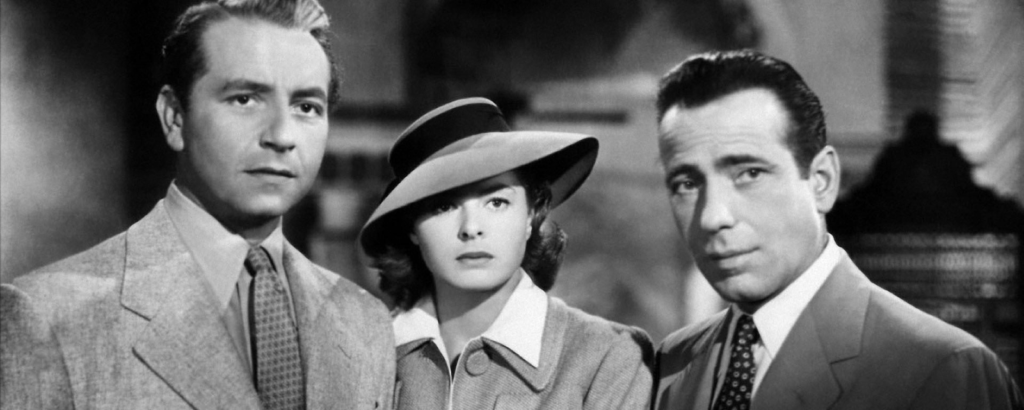All posts by Luana Cardoso
Filters
Pan’s Labyrinth
10 things that the viewer knows in the 1st 10 mins.
- That a civil war has ended
- There is a fascist regime living hidden in the mountains (military camps)
- There is a fantasy element that includes a princess who died
- Ofelia and her mother are introduced
- Ofelia’s character is established: she loves reading fantasy books and spends all her time doing it
- We learn that Ofelia’s biological father- who was a tailor- died in the civil war
- Her mother is seemingly sick. We can infer she is pregnant because of “Your brother is acting up”
- Ofelia has no fear wandering off on her own
- She and her mother arrive at a military base, where we learn the father of the child is the captain. He treats Ofelia poorly.
- Ofelia learns about the existence of a strange labyrinth at the military base, and she also meets Mercedes, who is the captain’s assistant/maid
- Mercedes has a maternal vibe towards Ofelia
Cinematic breakdown of the 1st 3 mins.
- The camera pushes in to Ofelia laying on the floor, as it tilts slowly
- It creates a canted, close-up angle on her face
- It zooms into her eyes
- It then cuts
- There is an establishing shot of the fantasy world
- The camera is always moving, always fluid as it shows the palace/castle thing. It tracks it with a long-shot.
- It pushes in into the doorframe
- It tilts upwards towards the sun, in a low-angled shot
- Then, it fades to white
- There is a wipe, as we then watch the cars drive by
- It cuts to a close-up shot of Ofelia reading her book
- Then, a medium-close up shot as we see Ofelia and her mother sitting in the back of the car
- The camera tracks the mother as she leaves the car as she feels sick
Micro-elements:
- Sound
The Sound Design of the effects that accompany the violence is very realistic. This is most likely enhanced in post-production by Foley artists. As parts of this film fit a horror genre this adds to the horror and emotional impact of those violent actions on the viewer. There is also a music motif in the Lullaby that is sung to Ofelia. It can be diegetic when sung by an on-screen characters (the Mother or Mercedes) but it becomes the theme tune for the film taking on a number of different musical forms (orchestral) adding to the suspense in places or the emotional state of Ofelia (rather like the ‘Time Goes By’ tune is manipulated in ‘Casablanca’.)
- Cinematography
The film’s cinematography draws from a lot of different influences. The cinematographer, Guillermo Navarro, used inspirations such as Gothic literature, Spanish folklore and harsh realism of 1944 fascist Spain.
- Mise-en-scene
Costuming
The costuming in Pan’s Labyrinth is representative of the time era in which the film was set, which is Spain in 1944. It’s especially important that it is set at a military base camp; the men wear neat uniforms with badges and hats, while the women wear maid dresses and other feminine clothing.
Also, costume can tell a story of its own. In the sequence where Ofelia is given a green dress by her mother to wear for a fancy dinner party, it is expressed that Ofelia is to impress her father. The green dress and bow represent the type of girl Ofelia’s mother wants her to be, and the role she must play as the captain’s daughter, however there is a symbolic moment when the dress becomes all torn, muddy and wet after Ofelia ignores her mother’s requests and she crawls inside a tree.

- Editing
Throughout the film, a lot of wipes and dissolves are used. These create a link between the real and fantasy world.
Representation (Gender)
How are men and women represented differently and how does this position the viewer?
One of the larger themes in this film is that of patriarchy. The men all hold a higher position as soldiers at the military base camp, but Vidal in particular (the captain) represents patriarchal beliefs. This is seen consistently throughout the film with his remarks that his unborn child will be a boy, and that this child will in the future surpass him, as Vidal did for his own father. Additionally, he places a greater concern in his son’s wellbeing over his wife’s, even saying that during birth if there is a choice to “save my child instead of my wife”.
Additionally, there is a binary opposition when comparing how gender was represented. In comparison to the strong men as soldiers, women are seen instead as the maids and cooks of the military stronghold. The main women of the film, Ofelia, Mercedes and Carmen all suffer at the hands of patriarchy.
Aesthetics
What is the ‘look of the film’? How has this been achieved?
This is a film that utilizes creatures that are created with CGI and expert costuming. It is a real actor that plays the faun, and yet he had to sit still through hours and hours of makeup work.
It was made with an old school (puppetry work) style and also modern effects (computer generated).

History and Social Contexts
The film is set within an era of the Spanish civil war. The two sides are the fascists and the nationalists. Captain Vidal is a representation of the fascist side of the regime, whereas Mercedes and her group of rebels represent the nationalists.
The film is very historically accurate with the way society is presented (the meal scene), the mise en scene and the costuming.
Instituitional Context
Though Del Toro is Mexican, this is a Spanish film (filmed in Spain in Spanish using a predominantly Spanish crew and cast) and so is classed as a European production.
Money- Del Toro put up most of the money himself. It was a “passion project” for him. His budget was 19 million euros, and the box office made 83 million, which is approximately 4 times more.
It won three Oscars, winning the category for best cinematography, best makeup and best production design.
Pan’s Labyrinth first response task
| Pan’s Labyrinth (Del Toro, 2006) | Critical Score- 8.5/10 I gave this film this score because I think it was extremely engaging the entire way through, and I loved the way it handled microelements; the costuming and mise-en-scene reflected the specific time era in Spain (1944), making it believable, the lighting was done very well when representing the binary opposition of reality vs fantasy and the dialogue (especially for Ofelia) was sharp and to the point. | Memorable Scene- The most memorable scene for me was the scene with Ofelia and the pale man because I was genuinely on the edge of my seat when watching it, the pacing and the shots used made it so terrifying for the viewer. It is also a very cool design in general. |

Wild Tales analysis
Wild Tales (Szifron, 2014) – Analysis Sheet for Evaluative Commentary
Film 1: Pasternak
| What did you like about the film? I liked the shock value at the very end of the film with the plane crashing into the elderly couple and the direct cut off. It fell in line with the dark, comedic tone from the rest of the film and was a very good ending. | What didn’t you like? This was my least favorite of the Wild Tales films, as I think it was the least memorable. There was quite a bit going on and I think it was hard to keep track off. |
| What ideas could you use? Narrative or style? I liked the use of irony as the characters are unaware that they are part of a joint act of revenge until it’s too late. | What ideas won’t you use? Why? The amount of characters |
In-Depth Study – Film elements
| Film element | Example |
| Cinematography | As the film went on, the shot length eventually shortened as the tension began to rise. This heightens anxiety for the audience, and is a good technique to make them feel as if they apart of the action. |
| Editing | The film uses continuity editing. This maintains realism, with things such as match on action, eyeline matches and shot-reverse-shots. This also makes it so the story remains coherent. |
| Sound | There is a lot of diegetic sound. Examples are the airplane noise, the announcements, conversations within the passengers and other rustling sounds. This again builds verisimilitude (reality) for the film world |
Inspirations – what ideas did this film give you for your own short film?
| Cinematography: There are lots of shot-reverse-shot sequences that were used a lot in the scene where the characters would have conversations with each other. This would maintain realism and a smooth rhythm. | Editing: The very final cut, the abrupt one that ends with the elderly couple about to get a plane crashed on them, is carefully chosen and the shock value is incredible |
| Sound: A lot of scenes used silence as a technique to emphasize tense moments of realization. The absence of any sound at all amplified a sense of dread | Other: |
Film 2: The Rats/Las Ratas
| What did you like about the film? I really liked the restaurant setting and how the use of the deep/low and dark lighting set the atmosphere. There was also bright, neon lighting as part of the restaurant’s decoration and I think it all blended in well. Additionally, it remained interesting the entire way through. | What didn’t you like? There’s not much I didn’t like about the film, however I think there could’ve been more character establishment. Understanding the relation between the characters was a little difficult, however that could’ve also been because of the language barrier. |
| What ideas could you use? Narrative or style? I think I will get inspiration from the location and the lighting/mise en scene. I really liked the scary/tense tone and the way the lighting helped establish that. | What ideas won’t you use? Why? The storyline of it; I wouldn’t use the murder story. I also wouldn’t use the themes of rage and revenge. |
In-Depth study – Mise-en-scène
| Feature | Example – how does it convey meaning or create an effect |
| Set Design | The set design inside the restaurant is very claustrophobic feeling. The small diner heightens tension and makes the scene feel intimate and inescapable, so the characters are stuck there with all their drama. |
| Costume | The costuming is simple, with the protagonist wearing typical waitress clothing. However, the man who she hates (the antagonist) is very rich-looking, wearing business attire with a suit and tie. This is good for storytelling; it shows how he has much more power than her and is much higher on the social ladder. It shows an unbalanced power dynamic. His costume specifically also tells the viewer that he is arrogant, corrupt and almost ‘untouchable’. |
| Space | The camera is always very close to the character’s faces, with many extreme close ups. Especially when they are talking. This makes the viewer focus on what they’re saying, but more importantly it heightens drama and tension. |
| Lighting | The lighting is my favourite part of the film. Lowkey-lighting is most prominent throughout the duration of it. It feels gritty and tense, and the use of shadows heightens that. Also, there are times where the lights help further establish the power dynamic between the protagonist and the antagonist, as the waitress is mostly shown through bright lights and the man through dark, sinister lighting. |
| Composition | All the elements together are perfectly composed to reflect themes of anger, vengeance and arrogance. But another technique used is the composition of the shots. More specifically, the characters’ positioning in frame. The man often sits centered and upright, asserting dominance, whereas the waitress is frequently shown off-center or behind objects as if she is scared and hiding, or hesitant. |
| Hair and makeup | The hair and makeup are natural, with the waitress/the protagonist having a neat, tied bun and neat clothing. |
Inspirations – what ideas did this film give you for your own short film?
| Cinematography/Sound/Editing: I’m inspired by the cinematography in this film. As I’ve already said before I love the way the lighting was used to establish tone and important character dynamics | Narrative structure: This film follows a very linear structure. The action happens continuously straight after each other. It also has a closed ending that is very clear and ties up the narrative well. |
| Establishing characters, setting, plot, theme: The characters could’ve been established better, but I think the setting and themes were very clear and well done. | Creating enigmas: Enigma was created from the relationship between the protagonist and the antagonist. The viewer wonders what their history is and why there is so much hatred. When it is revealed, it feels satisfying as the narrative was slowly building up to it. |
Film 3: Bombita
| What did you like about the film? I liked how the main character was written and portrayed. He blamed the injustice of society for his problems yet caused these issues for himself. It was like a satirical tone was taken. | What didn’t you like? I did like most of the film, however I think sometimes it was a little too fast paced. There sometimes wasn’t much time to process what had just happened, which could also be a positive- as it represents the film’s chaotic theme- but overall, I found it difficult to follow. |
| What ideas could you use? Narrative or style? The strong narrative of presenting him as a character. Very clear Causality | What ideas won’t you use? Why? The big explosions and other heavy CGI-moments |
In-Depth study: All elements
| Feature | Example |
| Narrative structure | It had a cyclical structure and was in chronological order. I liked the way it was told. |
| Establishing characters, setting, plot, theme | The themes were very clear and presented well. Especially the main theme of revenge which slowly escalated as the film continued. Also, the theme of injustice, which was important for the narrative and pushed it forward. Also, the protagonist was the focus for the entire film which meant his character could be deeply explored. I liked that element. |
| Mise-en-scene | The protagonist’s car presents itself as an initial symbol of his frustration and holds a lot of meaning. Additionally, an urban landscape is used and is presented well. |
| Cinematography | In a lot of moments, a handheld camera is used, and I liked that aspect as it reflected the protagonist’s sense of chaos in his life, with all the car problems and anger towards society he had. |
| Editing | There were a lot of tight, fast-paced cuts that moved the story along quickly and created a tense feeling for the viewer |
| Sound | There is a lot of diegetic sound throughout the film, and especially in the scenes recorded in a public space in the city. For example, in the tax office, the sounds of fax machines, printers, and phones are loud. |
Inspirations – what ideas did this film give you for your own short film?
| Cinematography/Sound/Editing: Match-cutting was used a lot, which was efficient. | Narrative structure: I think it had an open ending, as we as an audience weren’t sure of the main character’s relationship with his family, and if he would ever get released from prison |
| Establishing characters, setting, plot, theme: I liked how the film focused solely on the main character and that will be something I use in my own film. This way, the director could put a lot of focus on the protagonist specifically and develop his character. | Creating enigmas: The film created a lot of mystery with its open ending. At the end, the protagonist claims the nickname “La Bombita” and he sort of stands as a famous symbol for oppression and a lot of people start to support him, however, we don’t know if anything in their society changes or if La Bombita’s ideals had any success. |
Film 4: Til Death do us Part/Hasta que la muerte nos separe
| What did you like about the film? The costuming and set design were very realistic and it appeared to be a grand wedding. I liked the symbolism of the blood on the bride’s wedding dress. Also, the acting by the bride and groom was believable and moving, and finally it was entertaining. | What didn’t you like? I didn’t like that some sequences seemed to go on for too long and there also wasn’t a varied amount of shot types. |
| What ideas could you use? Narrative or style? The mise-en-scene was good for establishing important character moments. Such as when at the end the cake was knocked over, but the bride and groom had reconciled and then there was a shot of the cake’s center setpiece. Additionally, when the groom catches his wife cheating and he first notices her missing heel on the floor. | What ideas won’t you use? Why? I won’t use this dramatic and huge frenzied plot, as it would be hard to do. The drama was accompanied by the reactions of all the side-characters. |
In-Depth study: All elements
| Feature | Example |
| Narrative structure | The narrative follows a relatively linear structure, with a clear setup, rising action, climax, and resolution. It has no flashbacks or flashforwards. It also has a closed ending. (sort of) |
| Establishing characters, setting, plot, theme | This is another film where the characters were established extremely well, because they had so much time to be developed. We also had a lot of sharp and clear dialogue from the bride and the groom that helped the audience learn about them. The setting- a wedding reception- was believable, the plot was thoroughly interesting, and it was sort of a juxtaposition to itself, and finally the themes were what made the tension for the film. |
| Mise-en-scene | The mise-en-scene was good for establishing important character moments. Such as when at the end the cake was knocked over, but the bride and groom had reconciled and then there was a shot of the cake’s center setpiece. Additionally, when the groom catches his wife cheating and he first notices her missing heel on the floor. |
| Cinematography | There is dynamic camera movements throughout. The camera movement is fast-paced and fluid during action or suspenseful moments, which matches the unpredictable and chaotic tone of the film. For example, chase scenes or moments of confrontation are often shot with handheld cameras or quick zooms, creating a sense of urgency. |
| Editing | The editing matches the films’ tones of comedy and dark humour. In the case of comedic timing, rapid cuts, quick zoom-ins, and exaggerated reactions are used to enhance its humour, whereas for the darker tone, sharp cuts are used to transition from the more comedic situations to tense, suspenseful ones. |
| Sound | In the scene where everyone was dancing on the dance floor, the music was loud and blaring. It matched exactly what that scenario would be like, so it felt that the audience could connect to the experiences the characters were having. Additionally, it matched the films’ themes. |
La Jetée analysis
La Jetée (Marker, Korea, 1962) – Analysis Sheet for Evaluative Commentary
Part 1: Brief Reference
| What did you like about the film? Its storyline was the most interesting thing. I liked the concept and the way it was told through narration | What didn’t you like? I did not like the use of the still images, although it was a stylistic choice that likely had meaning. It isn’t something I’d personally use. |
| What ideas could you use? Narrative or style? Narrative | What ideas won’t you use? Why? The expensive CGI and other inaccessible stuff |
Part 2: In-Depth Study – Narrative
| Narrative Feature | Example | Your own example |
| Establishing protagonist – what information do we find out? How is it conveyed? | Introduced only in narration – first in third person as “a man marked by an image”; then in first person -memory of incident at the airport. We don’t see him until the first experiment is shown. This shows how core the act of remembering is to his identity – indeed we find out very little about him (he remains nameless) apart from his ‘remembering’ (even when he is travelling in time). | From the very beginning, we learn he’s obsessed with an image from his childhood. We see a still image of a woman’s face and a moment of death at the airport. This memory becomes a kind of anchor point in the story and establishes his inner world: he is haunted by time. This establishes the futuristic theme of the short film. We also learn he lives in a world after a World War, with location shots of destroyed places filled with rubble. |
| Establishing other characters – what information do we find out? How is it conveyed? | The Woman is the first person we see (“the only image to survive the war”) – and she is defined only by the fact the narrator remembers her. Feminist critics may comment on the fact she barely seems to exist outside the experiences of the narrator and her growing belief in him. | The scientists/experimenters are also characters that are established. Every time they appear on screen, their still images often show them shadowed, which gives them an almost faceless, inhuman feel that is eerie, like they are controlling everything behind the scenes. |
| Establishing location (time and place) – what information do we find out? How is it conveyed? | We are told immediately that the location is Paris. The bombed out wreckage of the city (real WW2 images) don’t immediately establish that this is the future until the narrator mentions radiation. The underground location beneath the Palais de Chaillot is shown by intercut images of broken cherubs and other sculptures. | We are shown the important location of the airport around the first few moments of the film where his vivid childhood memory was set. This is important as it sets up one of the most relevant parts of the narrative. We also see still images of a park, a museum and other war-torn places in Paris. The futuristic time is also conveyed through strange lighting and feels different in tone. |
| Creating Enigmas – what are they? How are they created? | The image the narrator obsesses over is the central enigma: who is the man he witnesses dying? How does he die? Who is the woman? The still images and voiceover powerfully evoke the nature of memory. | What other questions are posed throughout the narrative? This is created when the audience questions who killed the man in the very last scene in the memory. |
| Narrative binary oppositions | The ‘Living Present’ vs Past/Future. As the film progresses, what constitutes the ‘present’ (for the protagonist) seems to shift from his dystopian subterranean society to the ‘past’ of pre-apocalypse Paris. This is conveyed by the faster rhythm of the montage and the sequence (18:00-18:49) where the images almost become like traditional cinema. | Memory vs reality In the protagonist’s memories, the still images are vivid and emotionally charged. They carry a tone of nostalgia and warmth, and even look different to the images in the present. However, reality/the present is harsh and devoid of emotional connection. It’s a world where human experiences are manipulated by scientists and where the city is ruined by war. |
| Crisis – how was this conveyed? | Is it the first experiment? The moment the man spots the woman from the airport? Or is it when the future society offers him the chance to escape to the future? | What do you think is the crisis point? How does this affect the rest of the narrative? I think the crisis point is when he gets his first memory. And when the memories begin building up, and the experiment escalates, the film becomes a little more tense. It also establishes the point that the protagonist is being used as a mere experiment. |
| Resolution – is it closed or open narrative? | The narrative is closed – but it is also in a loop: the narrator is both the dying man and the child watching the scene. This ‘time paradox’ has inspired films as diverse as The Terminator and Looper (as well as 12 Monkeys which is almost a remake). | What do you think about the end? Is it closed – or endlessly circular? I think that with the theme of time travel being prominent, it makes it so the ending feels endlessly circular. If time can keep being rewinded and forwarded, and if we can manipulate it to our will, then that means that the ending can be stopped from happening and anything else could’ve happened too. |
Part 3: Meaning and Effect
| What did you think was the intention of the filmmaker(s)? Intellectual message? Emotional response? Everyone is trapped in their time – they cannot escape it, even through memory. It is also about concept of photography and cinema itself, trying to ‘freeze’ time with images despite time always being in motion. I think that with the use of time travel, one of the key messages could be that life can change very quickly and suddenly. That anything can happen at any moment in time, such as the main character’s memory of the shooting at the bridge | How was this achieved? The use of photomontage separates each frame of the story into a frozen image – even though these are joined together using traditional narrative film techniques such as voiceover, dissolves, fades and music. As the man begins to ‘live’ more and more in the ‘past’ with his lover, the space between these frames speeds up to resemble ‘motion picture’ speed at one point. The stuffed animals in the museum are also ‘frozen’ in a single moment. Your own idea: I think one of the main intentions of the filmmakers was the futility of time. But also, the way memories shape our identity. All the memories the protagonist had changed his life and helped form who he was as a person. This was achieved through the reflective narration. |
| Aesthetic binary oppositions The use of still photo images are combined with traditional narrative cinematic techniques that bring them ‘to life’… until the moment around 18:00 when they flow together. | Effect of these oppositions? Shows the intensity of emotion the narrator feels with his lover: like he is finally ‘living’ in moving time rather than a series of frozen, separated moments. Your example: Not sure |
Inspirations – what ideas did this film give you for your own short film?
| Establishing characters, setting, plot, theme This film established its theme very well. For example, the tone throughout remained eerie and strange, unknown to the viewer. This helped portray the futuristic/time travel narrative. I could take inspiration in making my theme appear very clear. | Creating enigmas This film also was good at presenting deep questions to the audience. It helped push forward the narrative and helped keep it interesting. I can do the same thing by leaving some plot points to mystery and not telling the viewer everything immediately. I can use the technique of foreshadowing maybe. |
| Narrative structure (non-/linear? Open/ closed ending?) I liked the use of the voice over. However I think I’d rather use a closed ending instead of an open one | Striking use of technical features Once again, the use of the voice over. |
French New Wave + New Hollywood
New Hollywood refers to the era of film that came after the collapse of the studio system in the 1960s. Americans films around this era started to become “meaningless”, and younger audiences began gravitating towards foreign films instead. Additionally, in many American film studios a lot of “flops” were being produced- commercial failures that did not produce money- some examples being “Cleopatra” and “Hello Dolly”. This may have been because the films were no longer relevant to a younger audience, and they were demanding different things… the studios were becoming out of touch. Finally, the habit of ‘going to the cinema’ had been broken due to the mass production of televisions across American households.
Some key aspects in New Hollywood is the use of handheld cameras, unconventional angles, and naturalistic lighting which contribute to making the films feel authentic, as if the viewer is there. Additionally, there is a naturalistic acting style.
Films in New Hollywood

Easy Rider, Dennis Hopper (1969)

The Graduate, Mike Nichols (1967)

Point Blank, John Boorman (1967)

Cleopatra, Joseph L. Mankiewicz (1963)
The most prominent stars and directors in this era widely varies. Firstly, for directors, the less known ones would include Mike Nichols, John Schlesinger, Tobe Hooper and Sidney Lumet, however some more famous directors that rose to prominence around this era include Francis Ford Coppola, Steven Spielberg, Martin Scorsese and George Lucas.

And for some stars in the New Hollywood era, there is:
Warren Beatty

Candice Bergen

Harrison Ford

And Karen Black
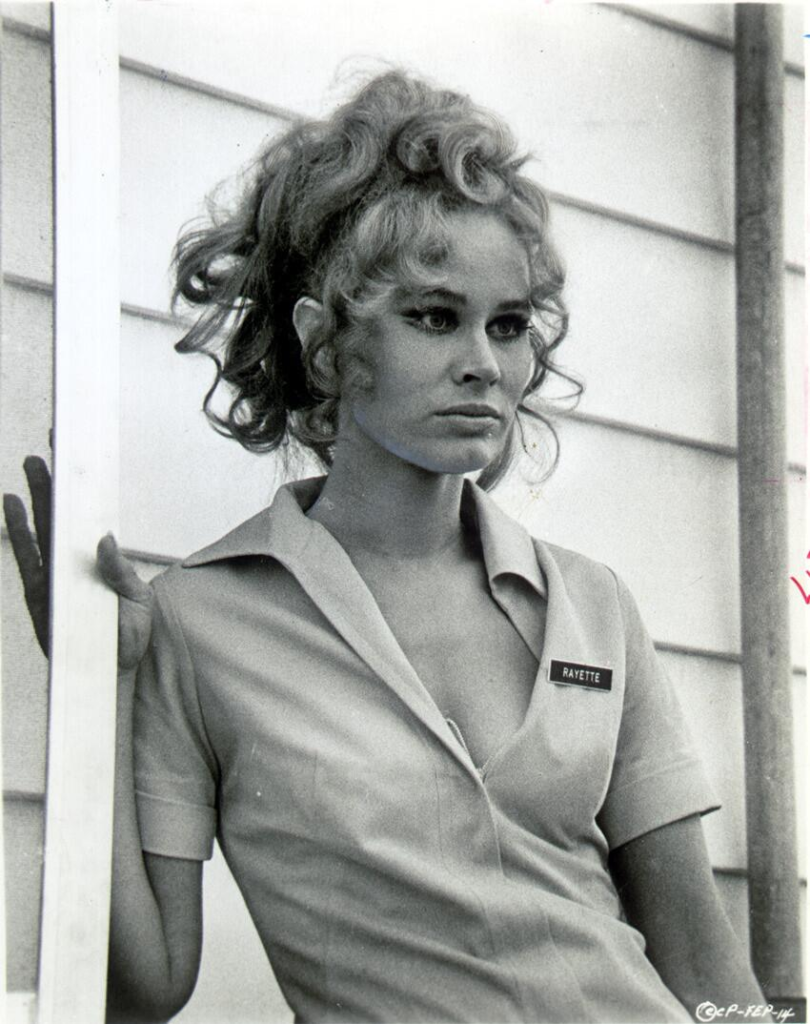
New Hollywood- History and Context
The Vietnam War
The Vietnam War, (1954–75), was a conflict that pitted the communist government of North Vietnam and its allies in South Vietnam, known as the Viet Cong against the government of South Vietnam and its principal ally, the United States.
However, this led to many protests at home for hundreds of thousands young and educated Americans across the US, as they did not like the US’ involvement in the war.
Riots in the Ghettos
The term ghetto riots, also termed ghetto rebellions, race riots, or negro riots refers to a period of widespread urban unrest and riots across the United States in the mid-to-late 1960s, largely fuelled by racial tensions and frustrations with ongoing discrimination, even after the passage of major Civil Rights.
Political assassinations
In this era there were many political assassinations. The most major though, was of John Fitzgerald Kennedy (JFK) in the 1960s. The others being those of Robert F. Kennedy (1968), Malcolm X (1965), and Martin Luther King Jr. (1968).
There also a lot of political disgrace.
1969 to 1972 – Richard Nixon (A US republican). Had to resign while holding the post due to being behind an ordeal where he ordered his henchman to plant bugs in the offices of other candidates running for office.
USA Counterculture
This was an anti-establishment cultural phenomenon and political movement that developed in the United States during the mid-20th century. It began in the early 1960s, and continued through the early 1970s. These people concerned themselves with individual equality for the younger generation which included gender identity and opposing the Vietnam war.
The influence of French New Wave
The French New Wave was a film movement from the 1950s and 60s by a lot of young and inspired French directors and one of the most influential in cinema history.
It gave birth to a new kind of cinema that was highly self-aware and revolutionary to mainstream filmmaking. It is a rejection of the old, American way of making films.
Some directors, like the well-known Goddard and Truffaut actually began as film critics before their directorial debut. They were passionate about the art of film and wanted to bring in their own ideas. They believed that films had lost their ability to capture true human emotion and “lacked sincerity.”
Some other notable directors from this new wave of cinema included Jean-Luc Godard, Claude Chabrol, Eric Rohmer, Jacques Rivette, Louis Malle, Alain Resnais, Agnes Varda, and Jacques Demy.
They are also not making films just for the sake of money, in fact a majority of the films were very low-budget. This was due to low funds because of the financial restraints from World War 2. And with a “cheap digital camera”, everyone can make a film- this was referred to as democratisation of cinema.
Some stylistic elements
- Deemphasized plot & dialogue was often improvised
- Jump cuts rather than continuity editing
- Location shooting – not building it
- Handheld cameras – gives a sense of a documentary aesthetic
- Long takes
- Direct sound & available light (live recordings, often didn’t adjust light)
- Natural light – “shooting 360 degrees in space”
- A lot of voiceovers
- Using “non actors”- people who have never acted before
Bonnie and Clyde’s director, Arthur Penn, was even inspired by Truffaut. He was particular inspired by Truffaut’s “Jules and Jim”.
New Hollywood Style
- New Hollywood directors like Arthur Penn approached film narratives with a fresh, unconventional style that broke away from the traditional, studio-driven storytelling of classic Hollywood. They used non-linear storytelling, anti-heroes, natural dialogue and improvisation, genre subversion as well as tragic conclusions.

- Discontinuity editing is an editing style that is the opposite of classical editing. It is known for it very specific techniques in which the director would use an arrangement of shots that are out of place, confusing or just non-sensical in comparison to the traditional style of narrative. The main techniques include: jump cuts, temporal ellipses, repeating and abstract shots.
- New Hollywood was often referred to as the “rise of auteurs” because it marked a period in American cinema where directors had creative control over their films. This shift was influenced by the French concept of auteur theory, which argued that the director is the primary creative force behind a film.
- In the modern age, filmmakers still follow the influence of New Hollywood, making movies that are both artistic and exciting. Whether in independent films, streaming movies, or big franchises, the spirit of New Hollywood still shapes how stories are told today. Stuff like bold storytelling, realistic characters, and new ways of mixing genres together.
Bonnie and Clyde First Response Task
| Bonnie and Clyde (Arthur Penn, 1967) | Critical Score- 6.5/10 | Memorable Scene For me the most memorable scene was the scene at the lake where Bonnie, Clyde and the rest of their group confront the sheriff. This is because it shows their characters very well and it establishes their group all together as a mischievous group of criminals for the first time. It is also a clumsy scene, so it shows Bonnie and Clyde’s inexperience but also their evilness. |
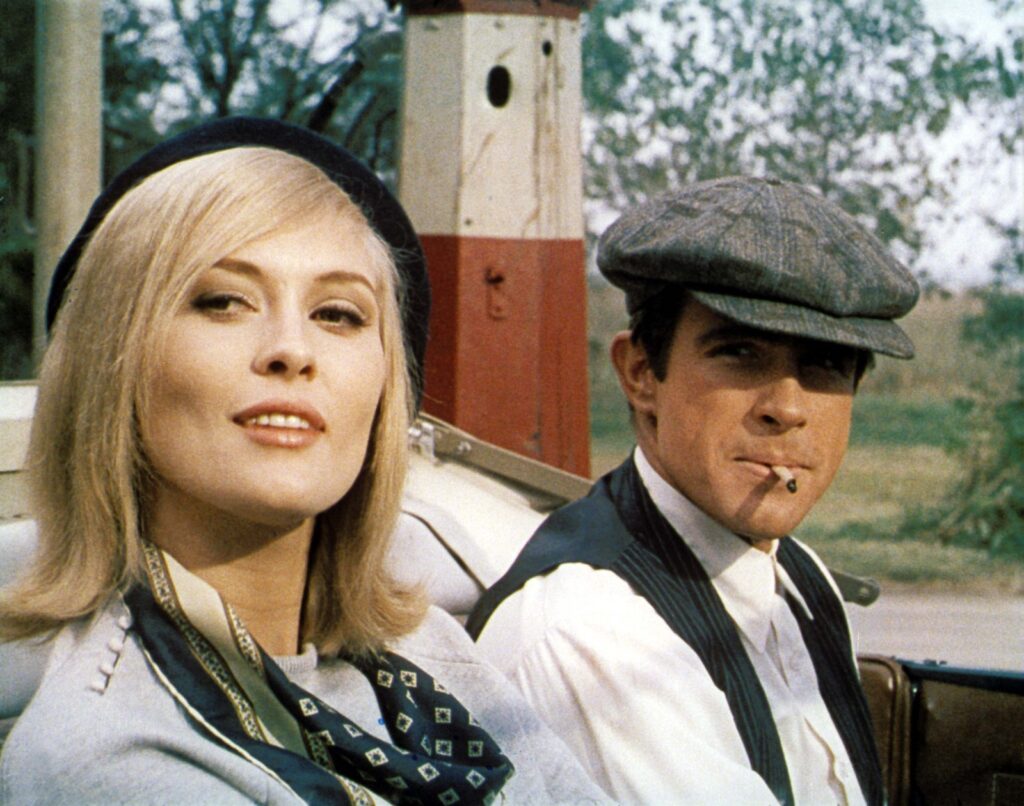
Casablanca
CAST
| Humphrey Bogart Had previously played typical “villain” roles- featured in gangster and detective films such as “The Maltese Falcon” and “High Sierra” where he had to be cynical, selfish and distrustful. Had acted for Warner Brothers before- he was in contract with them- but he had never once played a romantic lead before. This made him perfect for Casablanca as he could play the cold part of Rick Blaine from experience but also brought a vulnerability to him. It also developed his screen persona further, as a tactic from Warner Brothers. 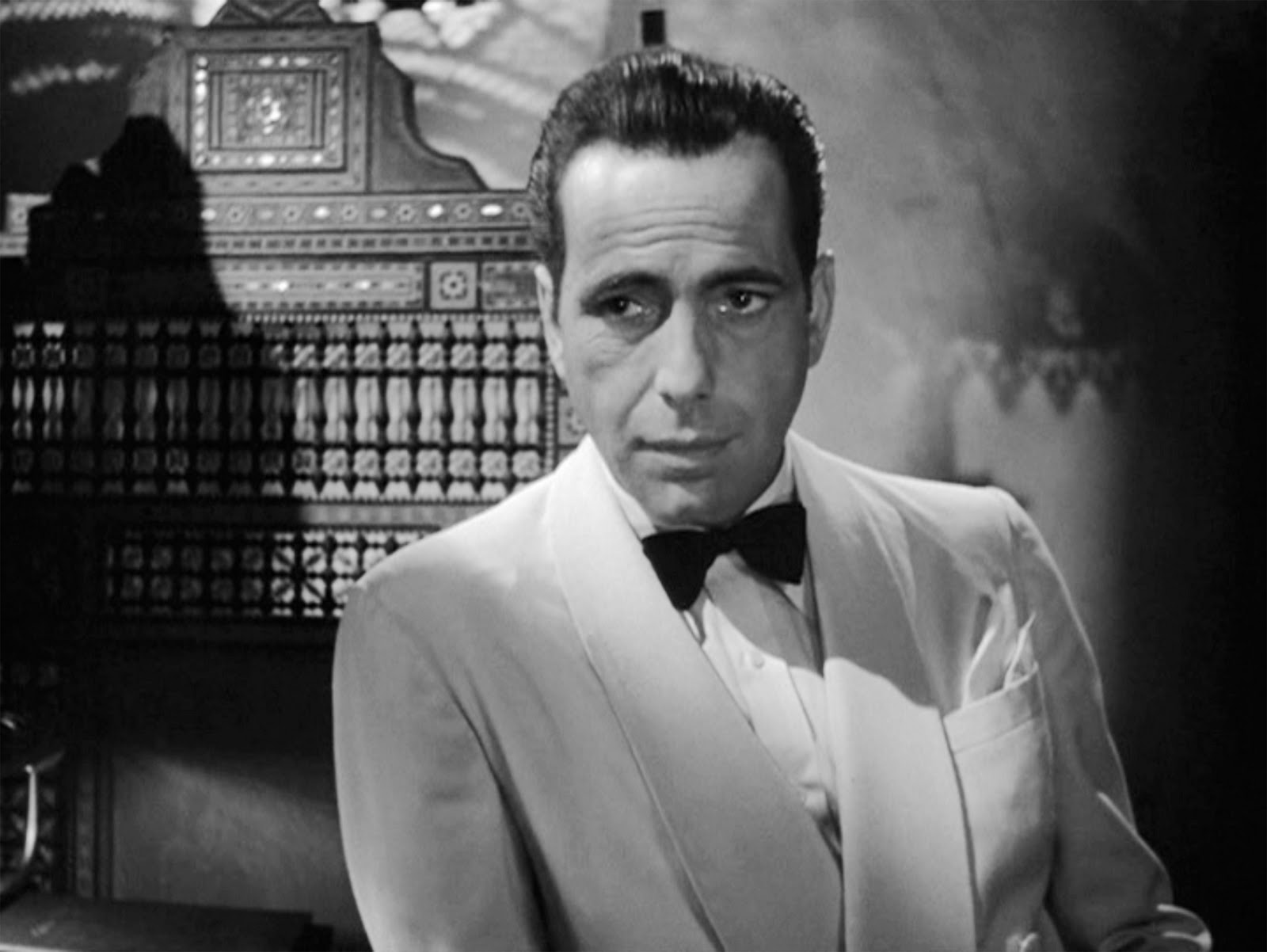 | Rick Blaine | |
| Ingrid Bergman A foreign actress. Ingrid was Swedish and spoke with an accent. In the original script she was American, however, they changed it so that her role could be more interesting.. and ‘exotic’, which heavily appealed to the American demographic in an era where a lot of WW2 films were being made at Warner Brothers. She was 26 when she was casted, and was very beautiful. She then worked on films such as “Gaslight”, “Notorious” and “Spellbound”. 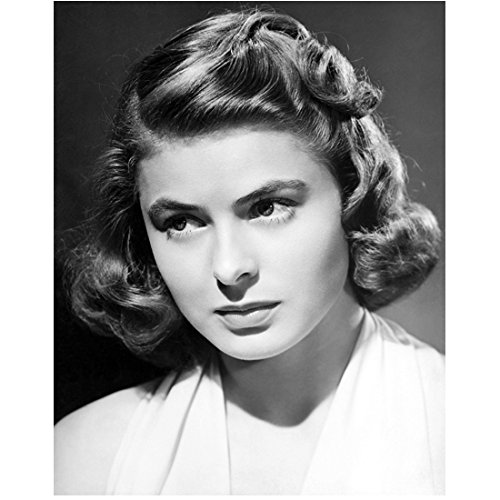 | Ilsa Lund | |
| Paul Henreid Before Casablanca, Henreid was already famous for his films and his television work, some including “Dead Ringer”, “Deception” and “Hollow Triumph”. He even got awarded two stars on the Hollywood Walk of Fame. However, after WW2, his contract with Warner Brothers was cancelled and he was left to his own devices. The Austrian-American moved on to directing and producing his own films.  | Victor Laszlo | |
| Claude Rains Rains was a British and American actor whose career spanned almost seven decades, therefore he had already some experience before his role in Casablanca. Some of his prominent roles included Alexander Sebastian in “Notorious” and Erik in “Phantom of the Opera“. I think he was casted for his role in Casablanca as he had been famously known for his villainous portrayals and a reputation for an inability to do bad acting and a rich, trademark deep voice. 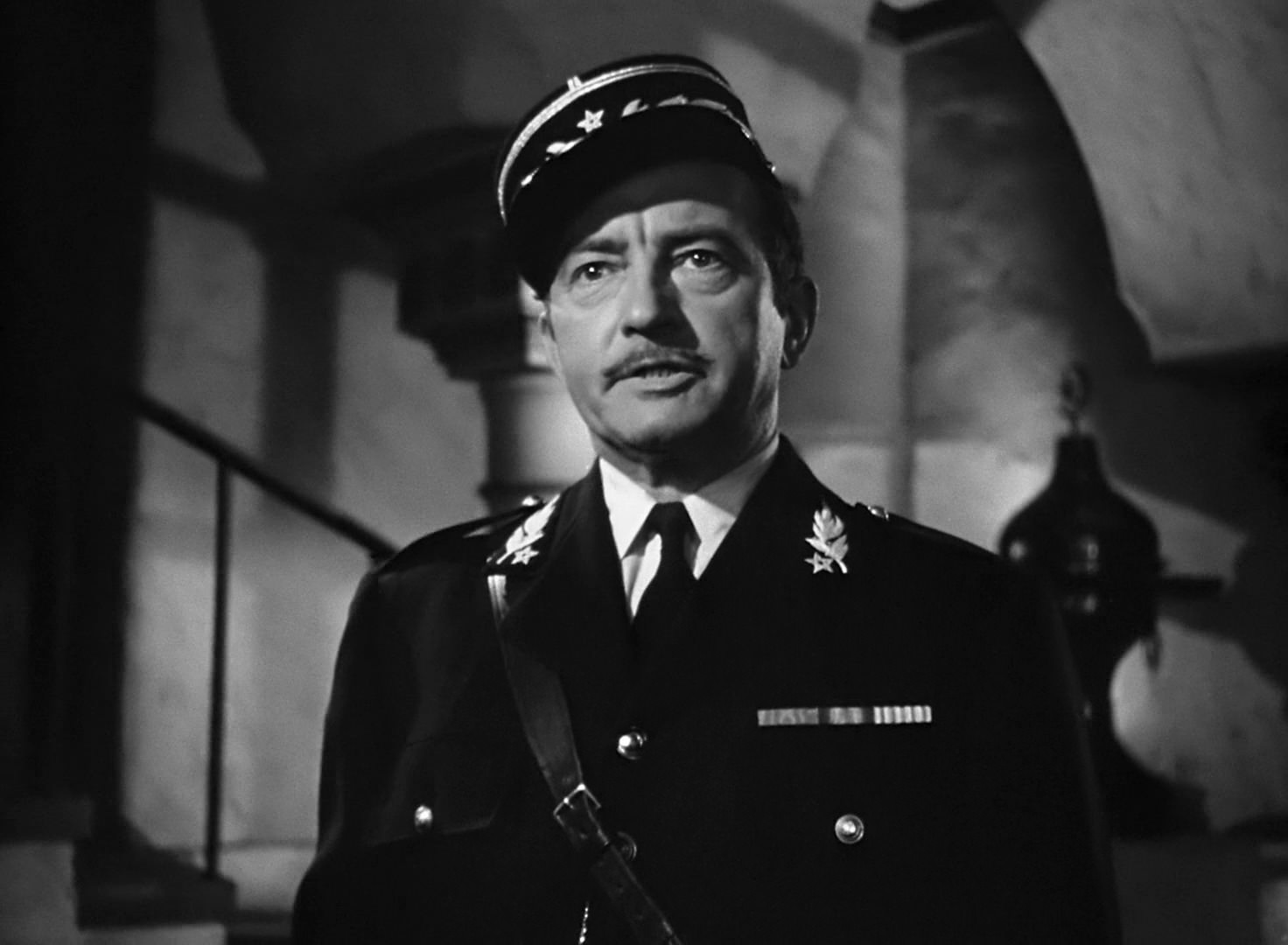 | Captain Louis Renault | |
| Conrad Veidt Despite not being a main character, Veidt, who was a refugee German actor that fled the Nazis with his Jewish wife, was the highest paid actor of Casablanca. His other prominent roles included “The Man Who Laughs”, “The Thief of Bagdad” and “Dark Journey”. It was argued that he was cast in Casablanca for his background and accent that gave an “authentic touch”. 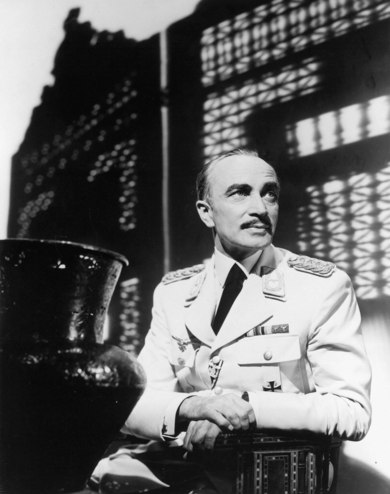 | Major Heinrich Strasser | |
| Sydney Greenstreet A British and American actor, Greenstreet had previously featured in five films already with Humphrey Bogart, however his acting career only began when he was 61 with the film The Fat Man. He also featured in Passage to Marseille and The Maltese Falcon. And despite his late start, he had a great run of significant motion pictures in Hollywood career lasting through the 1940s.  | Signor Ferrari | |
| Peter Lorre Peter Lorre was a Hungarian and American actor, active first in Europe and then in the US. He was known for his timid and devious character, and usually type casted for his accent as a sinister foreigner. His most famous role was international in the German classic film M (1931) directed by Fritz Lang. He was also in the infamous The Maltese Falcon and Passage to Marseille. So all around very iconic films. Lorre was contracted to Warner on a picture-by-picture basis until 1943 when he signed a five-year contract, renewable each year, which lasted until 1946.  | Ugarte | |
| S.Z. Sakall Sakall was also a Hungarian-American actor. He appeared in Christmas in Connecticut, In the Good Old Summertime and Never Say Goodbye. He was infamously known by the nickname “Cuddles” for his rotund body shape and overall cuteness, coupled with his caring personality, which he usually got type casted for. Sakall played numerous supporting roles in ‘classic’ type Hollywood productions including musicals and other films of the 1940s and 1950s.  | Carl (as S.K. Sakall) | |
| Madeleine Lebeau She was a French film actress who appeared in American films. She also appeared in The Parisian, The Royalists, The Country I Came From and Gunmen of the Rio Grande. She was signed up to the Warner Brothers studio due to connections to Dalio, who helped her make her way to California.  | Yvonne (as Madeleine LeBeau) | |
| Dooley Wilson Arthur “Dooley” Wilson was an American actor, singer and musician. He was most known for his role in Casablanca, where he sung the famous song “As Time Goes By”, but he also appeared in other film roles including Stormy Weather, My Favourite Blonde and Cabin in the Sky. He also led his own band in the 1920’s where he toured London and Paris. In relation to the Warner Brother studios, he was borrowed from Paramount Pictures for seven weeks at $500 a week per the studio custom of the day. He received his contract salary, $350 per week, and Paramount kept the balance. 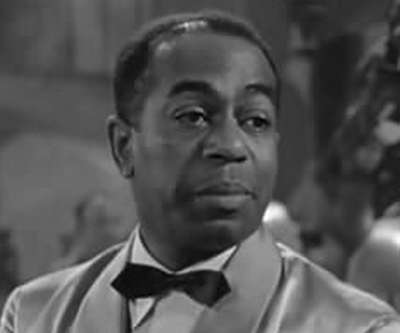 | Sam | |
| Joy Page Joy Page was an American actress most known for her role in Casablanca. However, she also appeared in films such as Kismet and Bullfighter and the Lady. She was related to Warner Bros as after her parents separated, her mother married Jack L. Warner who was the head of the studios. This landed her her role in Casablanca. 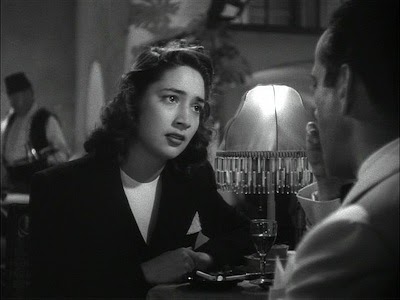 | Annina Brandel | |
| John Qualen Qualen was an American actor of Norwegian heritage who specialized in Scandinavian roles. Not many knew his name, although he did appear in films such as Angels over Broadway, Our Daily Bread and An American Romance. He began work at Warner Brothers in 1927 for the film Lights of New York where he earned $18,000.  | Berger |
Casablanca Documentary (Notes)
Michael Curtiz was a Hungarian refugee who left his home in Europe to come to America. He made 173 films for Warner Brothers and worked in that studio for over four decades, all while his films had a wide range and variety. He was named as “one of the greatest” of camera and character movement, especially for his work with the camera dolly and zooms, an example being the scene where Rick emotionally thinks of his past with Ilsa. Curtiz broke away from the typical Hollywood substyle of fixed cameras and was known to experiment.
The extras cast for Rick’s bar was special because the majority of them were truly immigrants/refugees themselves, cast by Curtiz as he could empathise with them. Entering Casablanca and playing characters who were trapped and waiting desperately for visas meant that the extras could relate so that their roles in the film felt genuine and passionate with true emotions. An example of this is when they sing the French national anthem in the bar. Also some of the main cast, such as Peter Lorre, were also foreign. In total 34 different nationalities were represented both in and off camera.
The script for the film was originally called “Everybody comes to Rick’s” and was a play. It was delivered to Warner Brothers the day after Pearl Harbour, the Japanese bombing of an American naval base where hundreds of Americans died.
The producer for the film was Hal B. Wallis. Despite working for the Warner Brothers, he had quite a lot of autonomy, so even when the studio rejected Bogart as the lead man, Wallis persisted that it would be him. He worked hard to make sure the film appealed, and empathised with an American audience.
Some people criticized that because of this, Casablanca could be considered American propaganda.
- Casablanca was the perfect example of the “old studio style.”
- The cast and crew was the best of the 1940s
- Warner Bros produced many WW2 films at the time
- Dialogue and ending was made on a daily basis. Frustrated the stars, however made for a better film in the end.
Mise En Scene in Casablanca
Locations
The production of Casablanca took place in two regions: the Warner Bros lot in Burbank and the Metropolitan Airport at Van Nuys near Burbank. However, the film takes place in Casablanca, Morocco.

Sets
The sets in Casablanca genuinely looked like sets, which was a good thing in the Old Hollywood style. The artificiality of it made for great theatre. The sets for Casablanca suggested an exotic and dangerous place filled with intrigue and romance.
The whole movie was filmed with a soundstage and a few other scenes on a Warner Brothers backlot.
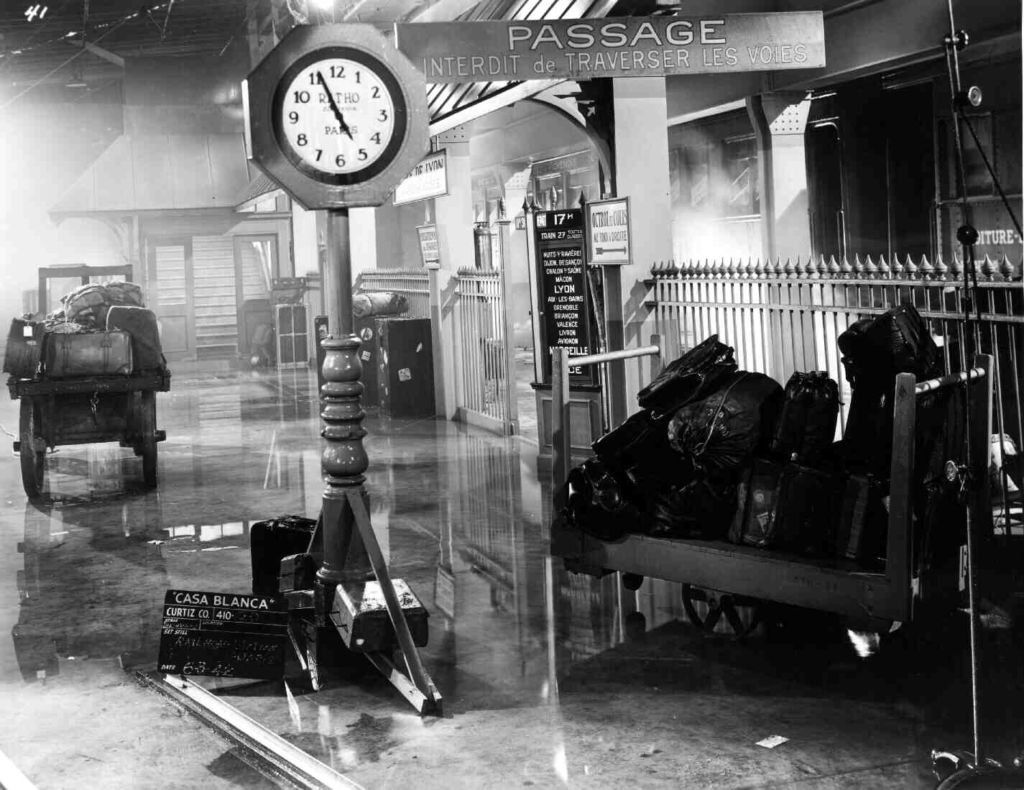
Costumes
The costume designer in Casablanca was Orry-Kelly, an Australian-American Hollywood costume designer. The costumes give the film an extra gleam; it was glamorous as no costume had any wrinkles and every character had their own colour palette that they wouldn’t deviate from. The heroes are in soft colours (Bogart in his white tuxedo). While Ilsa often appears to be wearing quite lightly coloured elegant outfits that consist of skirts or dresses.

Props
The props seen in Casablanca are all meaningful. They help exaggerate the characters feelings, add detail to the plot, and sometimes move forward a narrative. Some examples of props seen at Rick’s bar.
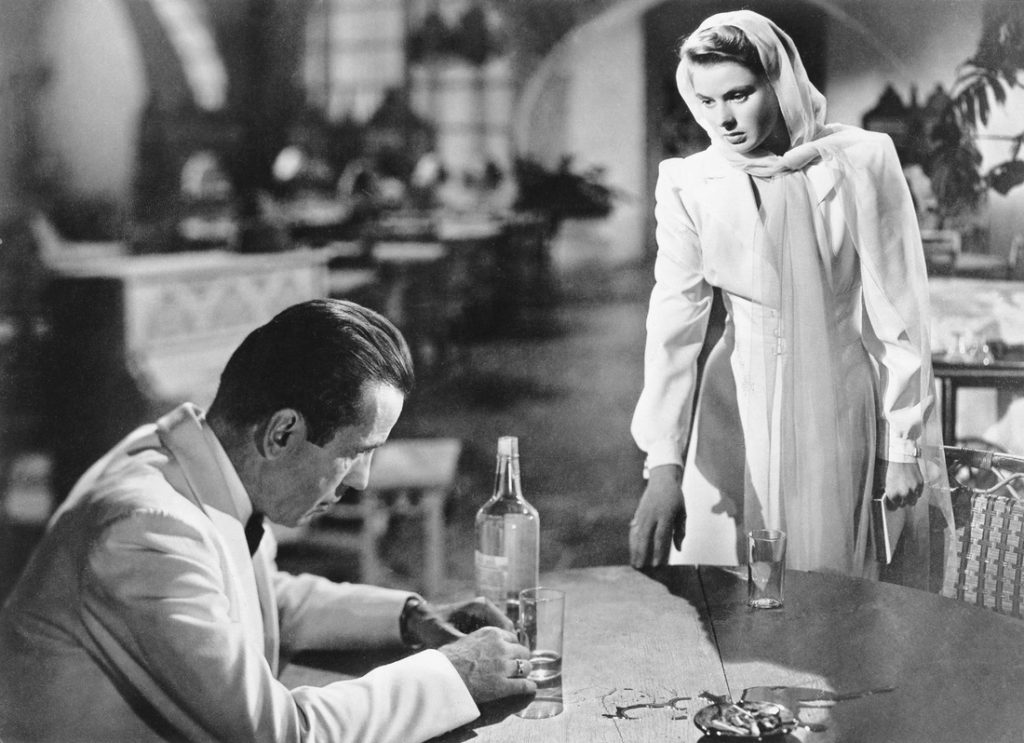
You can see fancy table lamps, exotic plants, expensive looking alcohol and even white table cloths. The purpose of this is to portray how exclusive and posh the bar is.
Editing in Casablanca
Casablanca is known for having an incredible pacing and also for managing to balance a variety of different tones within a sequence (such as tones of melodrama or comedy).
One sequence within the film that shows all the strengths of editing in Casablanca starts at the scene where Rick Blaine finds a way to help a young wife’s husband to win in roulette so that they’re able to buy their visas to leave.

At the roulette table, the editors are able to give in glances to moments that show little pieces of information that are important, and also able to cut to different actor’s faces expertly to convey to the viewers who their character’s really are. An example being Annina Brandel’s close-up shot and then Rick’s.
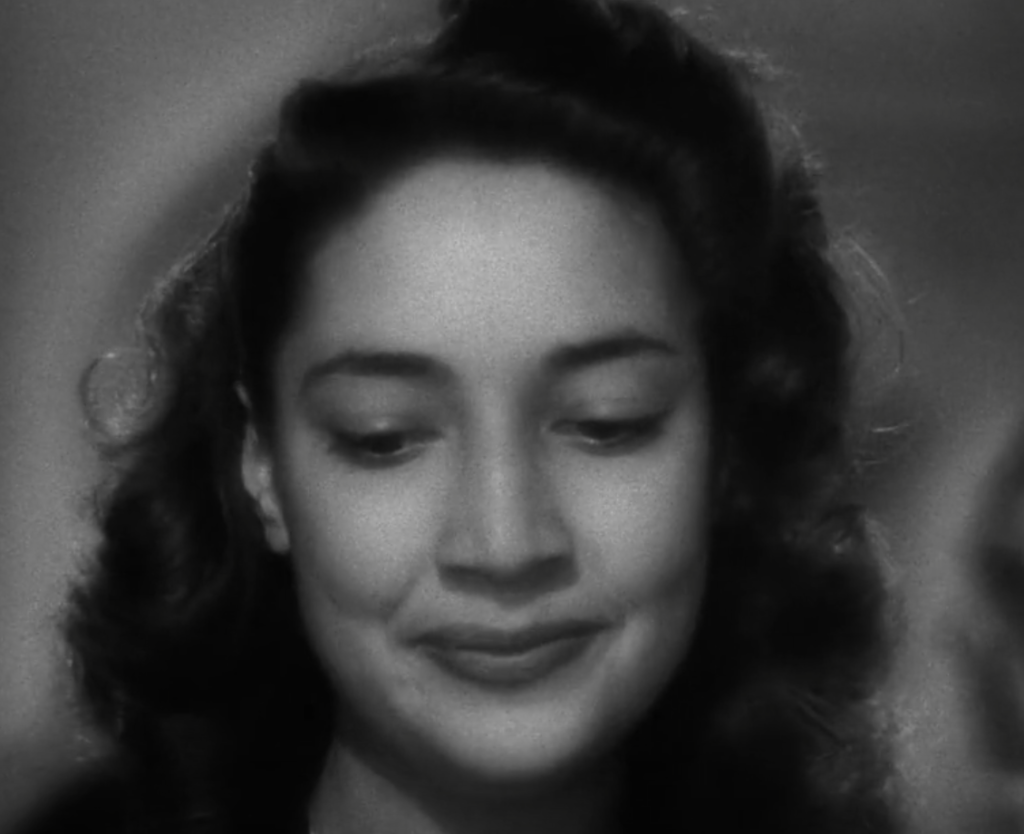

In this shot of Rick, the viewer sees a different side to Rick that they hadn’t seen before. From a stone-cold pragmatist who never emotionally involves himself in anything, to then a caring and more vulnerable Rick. After, the scene then cuts deeper into the sequence as Rick re-enters the bar to the Germans singing their anthem:
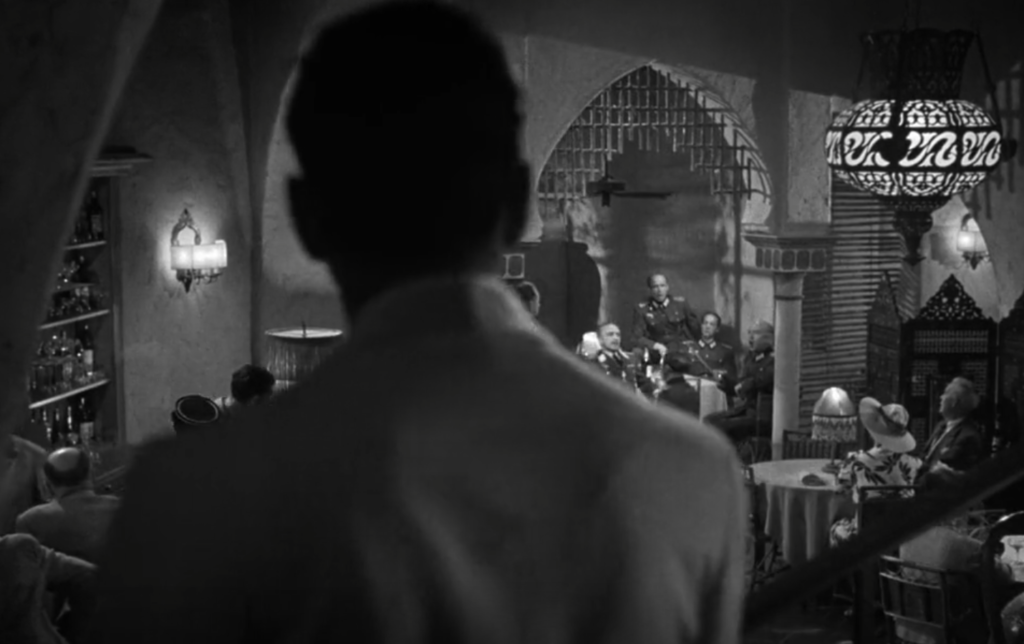
And suddenly, a musical set-number has been embedded into the narrative of the film. Throughout this entire sequence, the tones of melodrama, comedy, tension and even a musical tone all seem to be balanced very well all thanks to the editors. The sharp cuts and the arrangement of scenes all work together to create this narrative.
The film also uses the technique of smooth transitions between shots to allow the viewers to experience the scene as if they are viewing it from the characters’ eyes.
Sound in Casablanca
Firstly, the score of Casablanca was composed by Viennese composer Max Steiner, who also famously composed King Kong (1933). His music is the glue that holds the film together- he provided the film with a theme and a backstory that was unforgettable. He masterfully wove the diegetic music and nondiegetic music of Casablanca into an evocative score that illuminates and connects the political and romantic conflicts in the film, an example being the infamous song “As Time Goes By” that Sam sung to Ilsa at the bar. Which also became a sound motif for the whole rest of the film. In particular the scene where Rick is waiting in the rain at the train station.
But also, in the course of the movie, different sounds are added to the scenes so the viewer has an idea of the feelings and emotions that the characters are experiencing. Sounds in Casablanca, like the rain and the voice tone are important. The sound of the rain in the film (diegetic sound), was added to scenes that presented sadness or agony.
Underscoring, in the first quarter of Casablanca, had a Arabic sounding-like melodic figures that could be heard (pentatonic scales and movement along chromatic intervals, enhanced in its cultural colour by instrumentation).
Aesthetics in Casablanca
Casablanca is a film that invites its audience to think of its realism, with both the cinematography and the narrative. More specifically things like the set design and and staging make the film feel particularly real.
In terms of the tone of the film, it has a suspenseful feel to it throughout for its themes of surrounding WW2. It’s gritty, but at times it can also be comedic and there are the few romantic moments spread throughout that elevate the film to something beyond just the typical “war film”.
The visual style of Casablanca is film noir. This is a cinematic term used primarily to describe typical Hollywood crime dramas. These are marked with the tones of pessimism, fatalism and menace. Some elements of this style of film is stark lighting effects, frequent use of flashbacks, intricate plots and cynical heroes.
Themes and Issues
Isolationism– At the beginning of the war, America declared they would remain neutral, and there was even a poll that found that 88% of Americans opposed the idea of declaring a war against the Axis powers. They would be called isolationists- people who ultimately believed a dispute between united nations is useless. However, later, of course Pearl Harbour occurred and that led to America’s involvement.
This is all links back to the main character of Casablanca; Rick as an allegory for WW2. He goes from a cynical and cold-headed man who remains “neutral”, however by the end of the film he is no longer an isolationist but a man who involves himself in the war- a sentimentalist- that is also caring for things and more vulnerable to himself. He becomes a patriot.
Representation in Casablanca
Women

Ilsa Lund is an example of a woman portrayed in Casablanca. Typical for its timeframe (1942) she was the exact representation of what a woman “should” be. She was beautiful, brave and also witty and conveyed a certain “look” for the era; she conforms to traditional notions of femininity. She also plays the role of being the main romantic interest for both Rick and Laszlo, and this can be seen as the film presenting women as a sort of trophy to be competed for between men. But she is also fiercely loyal to her political cause, which portrays woman as strong and allowed to have their own ideologies.
Men
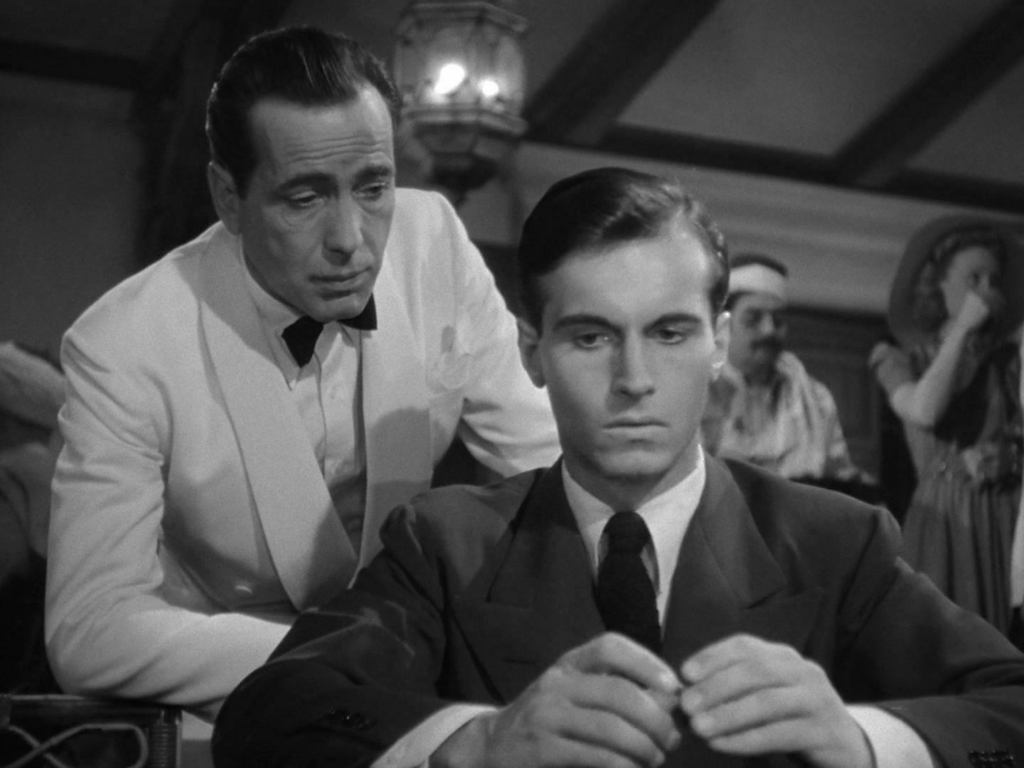

There are a lot more men with important roles in Casablanca than women. Additionally, the storyline of the film reflects many stereotypical male concerns: war, duty to country, and freedom. Even Rick himself is an allegory for WW2. So most of the men in this film are portrayed as leaders and decision makers. They are represented as strong and some, as heroes. However, Rick is also shown to be sophisticated, a gentleman, and this is a typical character type for its romantic genre, and shows the duality of masculinity.
People of Colour

The portrayal of non-white characters in Casablanca is limited and stereotypical. The only prominent and important POC character is Sam, a black African-American man who plays the piano at Rick’s establishment. However, Sam being the only black man of importance at Casablanca could reinforce harmful stereotypes and even offend many viewers. Additionally, the film’s themes of patriotism, war, and violence may draw negative responses from certain group’s in todays society due to its portrayal of race.
Americans
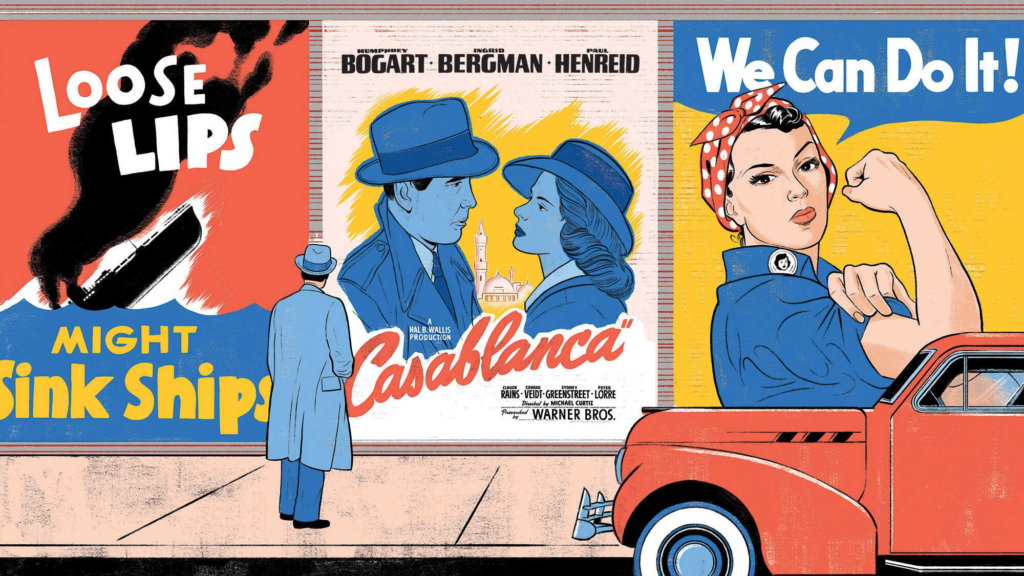
Casablanca, for Americans, is the “most patriotic film” ever made. It was a political allegory for WW2, and Rick as the main character represented America. As he said himself, “I don’t stick my neck out for nobody.” which represents his stance of America being neutral in the war, although it did eventually show that he began to cave in for underdog, just like America did in the actual war. Furthermore, academics say Casablanca was a ‘anti-fascist propaganda vehicle’ which was designed to support US participation in the Allied Forces’ struggle for global justice.
And in an challenging era for Americans who were enlisted in proper war efforts, this beloved film gave them hope for their own Hollywood ending.
Europeans

The biggest representation of Europeans in Casablanca are all the refugees awaiting at Rick’s to find escape to America- and even better, the extras that played their roles were refugees in real life too. This meant that proper emotion could be presented when they were acting, as they could truly emphasise. Also, their culture as Europeans is represented as being beautiful and strong, which can be seen in the scene where they all sing the French national anthem.
Political and Social Context in Casablanca
World War 2 took place from 1939 to 1945. The allies of the war were Britain, France and the USA. However, the axis powers (the force against) included Japan, Germany and Italy.
Vichy France is a territory. It was in the “Free Zone” in the South of France. It had its own government, but they were basically just a puppet of the Germans. Vichy France controls Casablanca, which is in Morocco. Morocco is apart of the French empire.
The USA doesn’t join until December 7th, 1941. They do so because of the mass bombing of American fleet at Pearl Harbour, an unprovoked attack by the Japanese.
Operation Torch was an Allied invasion of French North Africa during the Second World War. This included the invasion of French Morocco, which entailed transporting 35,000 U.S Army troops and 250 tanks in complete secrecy. This was on the 8th of November, 1942.
The Casablanca Conference was the January 1943 meeting between FDR (Franklin D. Roosevelt) and Churchill held in Casablanca in which they planned the Allied European strategy for the next phase of the World War. The two agreed to step up the Pacific war, invade Sicily, and insist on unconditional surrender.
“Captured the Zeitgeist” is a German phrase meaning the attitudes and ideas that are generally common at a time, especially the attitudes and ideas shown in literature, philosophy and politics. It means “The Spirit of Time”.
Casablanca had its first premiere on November 26, 1942, in New York City- which was a mere 18 days after Operation Torch- and was released nationally in the United States on January 23, 1943.
In the cinema they had “movie reels”, which was essentially like watching the news at home. This is where many Americans gathered their information about the war, as well as from newspapers. After watching Casablanca, Americans left with a feeling of serendipity.
Film Noir
Film Noir is a cinematic term used to describe a specific type of film in Hollywood: stylized crime dramas, particularly those that have a mood of pessimism, fatalism and cynical attitudes. The 1940s and 1950s are regarded as the “classic period” of American film noir.
Some examples are=
In a Lonely Place (Nicholas Ray, 1950)

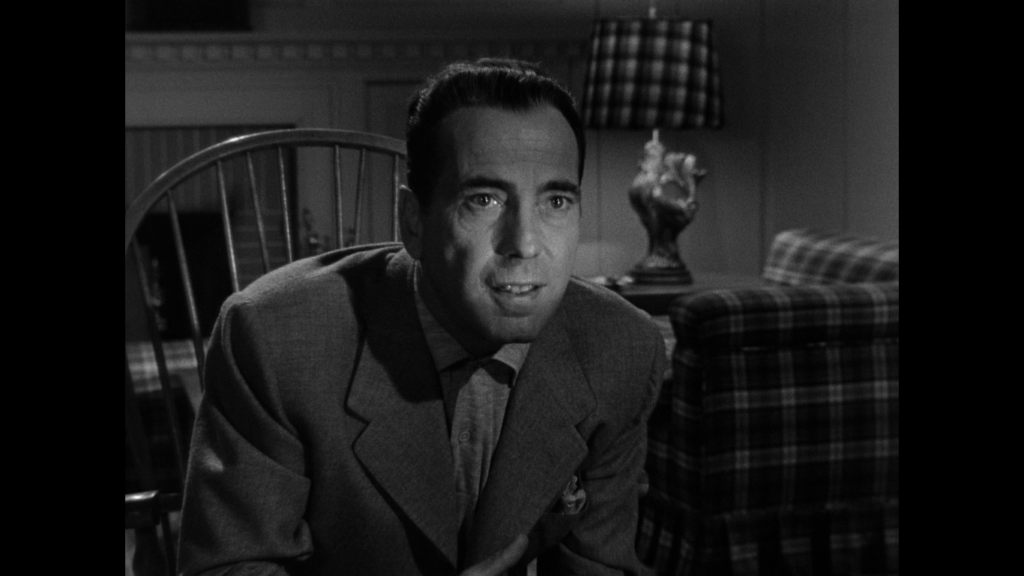
And Double Indemnity (Billy Wilder, 1944)
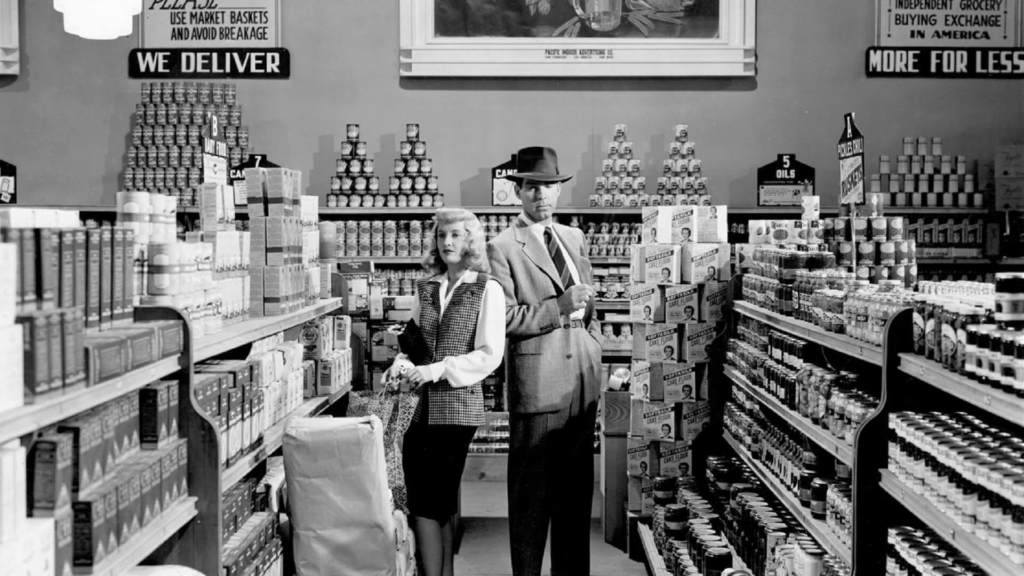
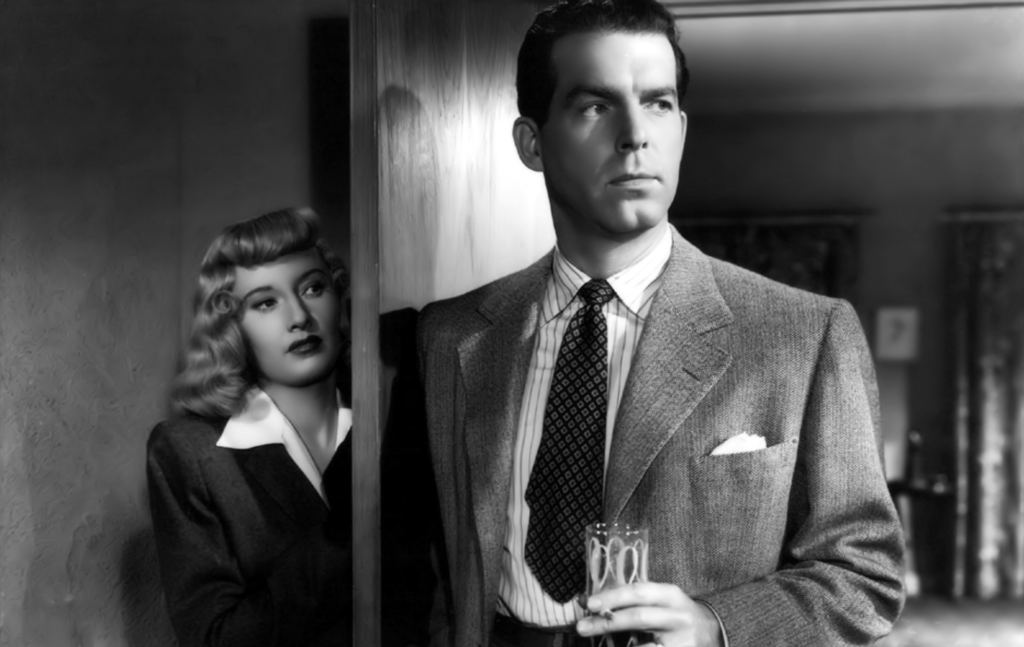
There is also the “Neo Noir” type of film which contains the visual style and themes of classic film noir but with an added modern sensibility. They also contain graphic displays of violence and sexuality.
An example is Blade Runner (Ridley Scott, 1982)
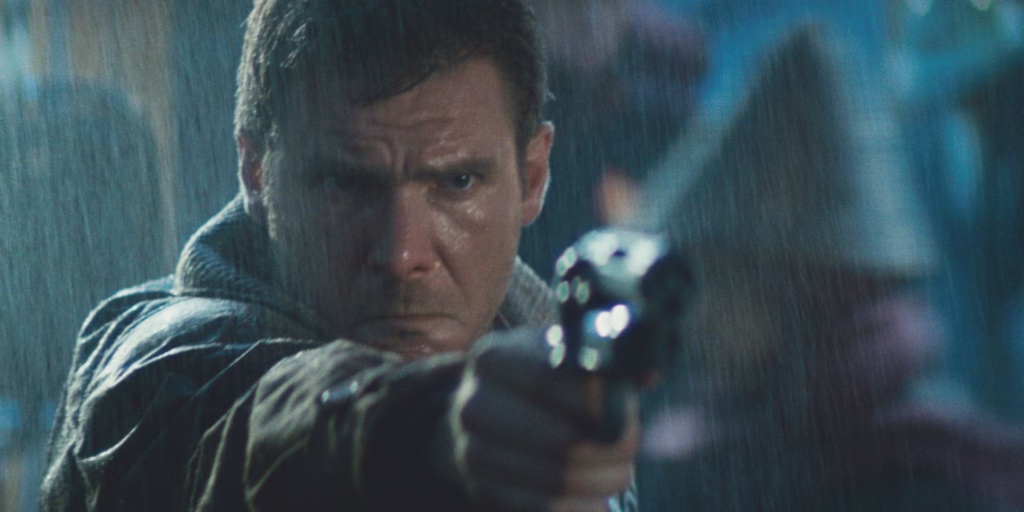
Casablanca First Response task
| Casablanca (Michael Curtiz, 1942) | Critical Score- 9/10 I gave the film this rating because I think that it was unexpectedly enjoyable as it was comedic with genuinely funny moments, the characters (despite a little flawed) were good to watch, and I think the narrative story of the film stayed very focused. But mostly the dialogue in this film stood out to me; it was sharp and every word mattered and added something new. | Memorable Scene For me, I think the one scene that stood out particularly was the scene where Ilsa asks Sam to play her a song that related her to Rick. I think that it was just a very well-done scene, and not only was the score incredibly beautiful but it is an extremely iconic scene too. |
